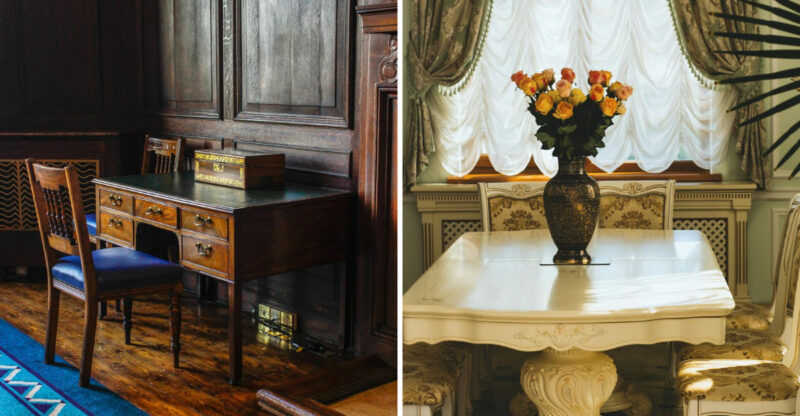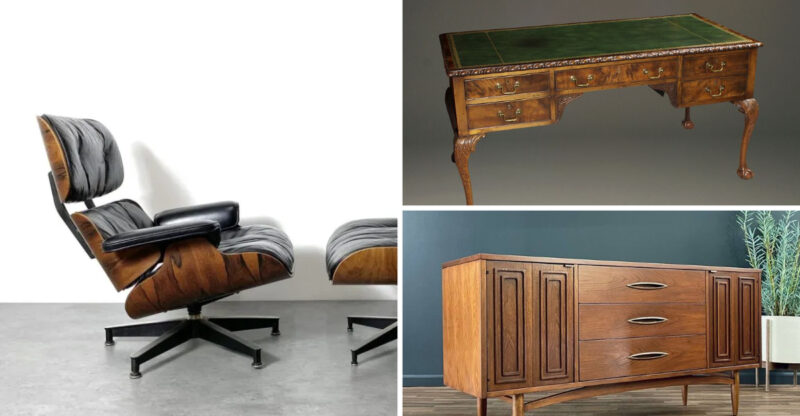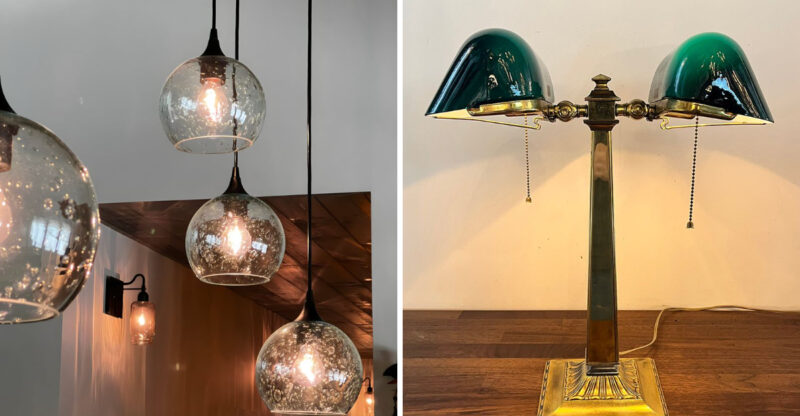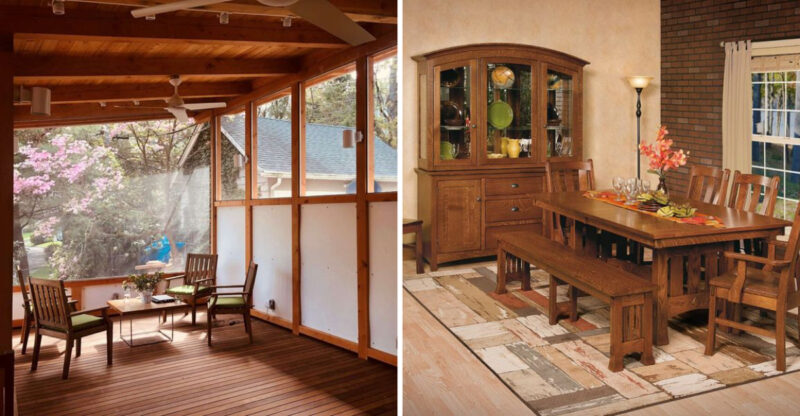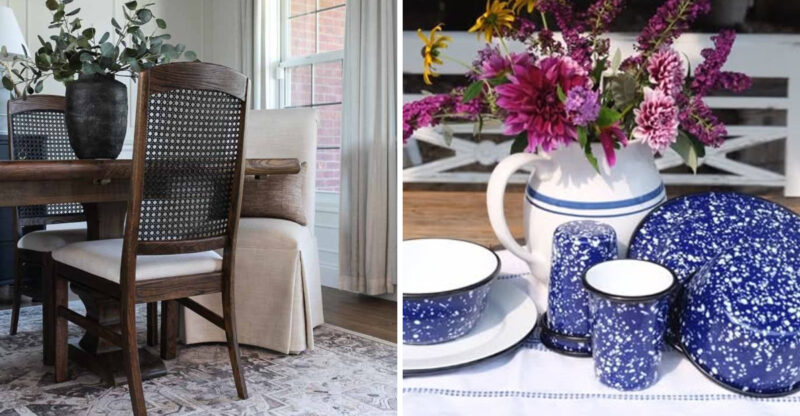Bringing Back The Charm 15 Vintage Kitchen Ideas To Reconsider
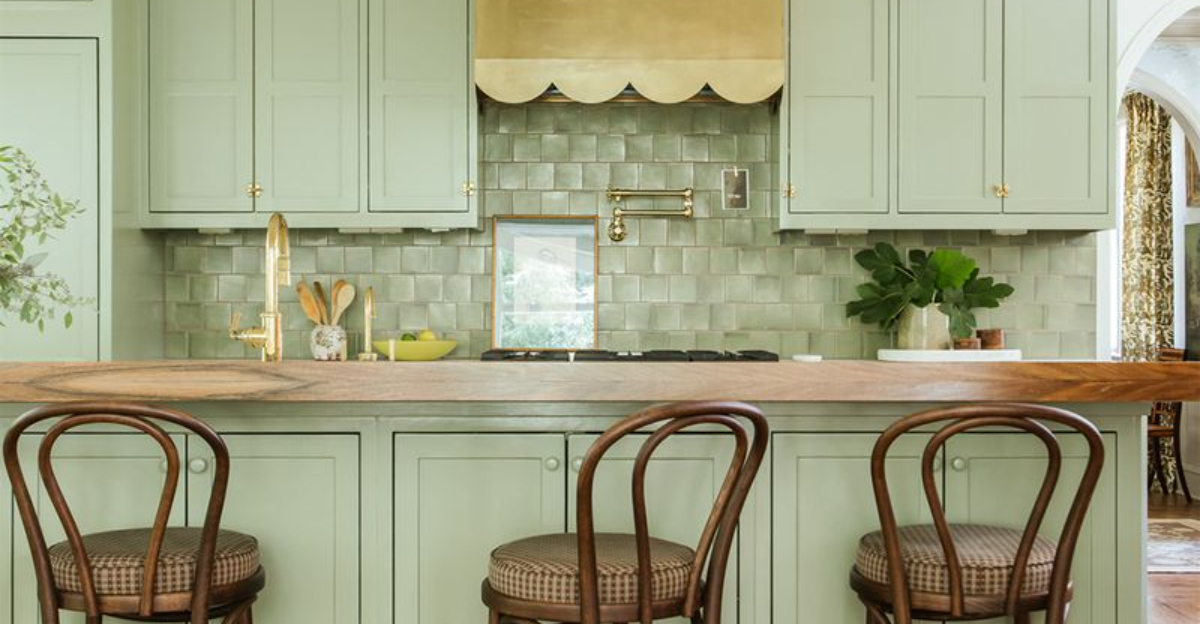
Remember those warm, inviting kitchens from grandma’s house? There’s something magical about vintage kitchen designs that modern aesthetics often miss.
Today’s homeowners are rediscovering these classic elements, finding ways to blend nostalgic charm with contemporary function.
Whether you’re planning a full renovation or just looking for small touches to add character, these 15 vintage kitchen ideas might be exactly what your space needs.
1. Retro-Inspired Appliances

The heart of any kitchen revival starts with statement appliances that combine old-school looks with modern technology. Brands like SMEG and Big Chill offer refrigerators, stoves, and dishwashers in candy colors with chrome accents that scream 1950s diner while hiding energy-efficient features inside.
My kitchen transformation began with a mint green refrigerator that instantly became the conversation piece of our home. These appliances aren’t just pretty faces they’re workhorses with modern conveniences wrapped in nostalgic packaging.
If full-sized appliances feel like too big a commitment, start small with vintage-inspired toasters, mixers, or coffee makers that deliver the same aesthetic punch without the renovation headaches.
2. Beadboard Backsplash
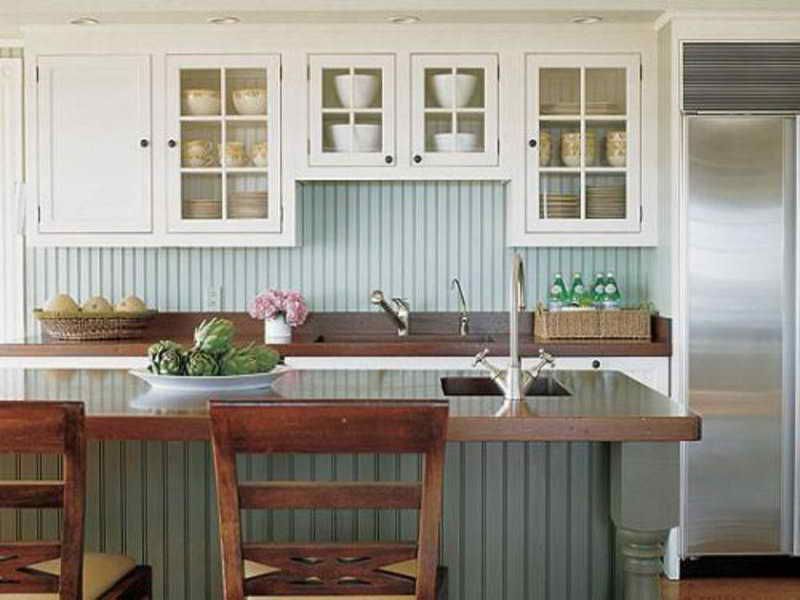
Farmhouse charm meets practical protection with beadboard backsplashes that bring instant character to any kitchen. This vertical paneling with its distinctive grooves was a staple in early 20th-century homes, offering an affordable alternative to expensive tile work.
When I installed beadboard in my kitchen, I was amazed at how it softened the space immediately. The subtle texture catches light beautifully throughout the day, creating a warm, dimensional surface that flat backsplashes can’t match.
You can paint beadboard any color to complement your kitchen palette though classic white remains the most popular choice. For extra durability, consider moisture-resistant versions specifically designed for kitchen environments.
3. Butcher Block Island
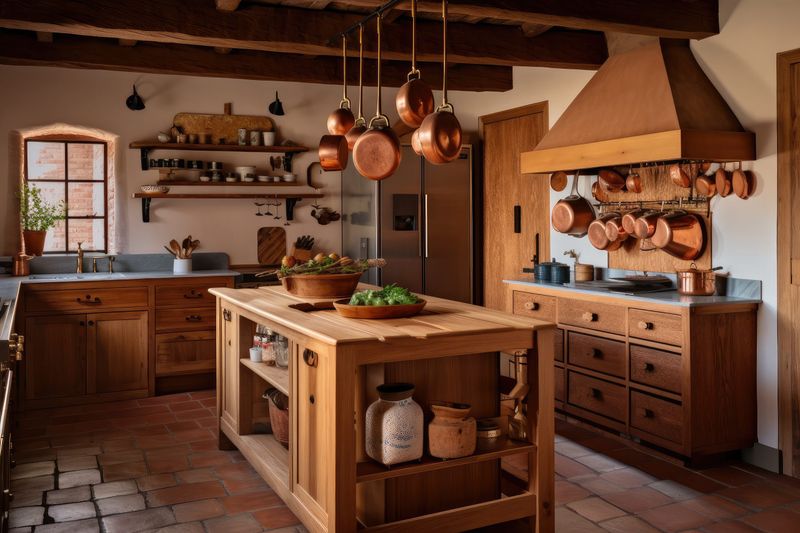
Nothing says working kitchen quite like the warm glow of a well-loved butcher block island. These solid wood workspaces have been kitchen staples for generations, developing rich patinas that tell stories of family meals and holiday preparations.
My butcher block island has become the heart of our kitchen where kids do homework, guests gather with wine glasses, and I knead bread dough on weekends. The natural material feels alive under your hands in a way that manufactured surfaces never can.
Though they require occasional maintenance with food-safe oil, the effort pays off in durability. Many vintage butcher blocks have survived decades of use and still look beautiful, making them both sustainable and timeless additions to any kitchen.
4. Vintage Lighting Fixtures
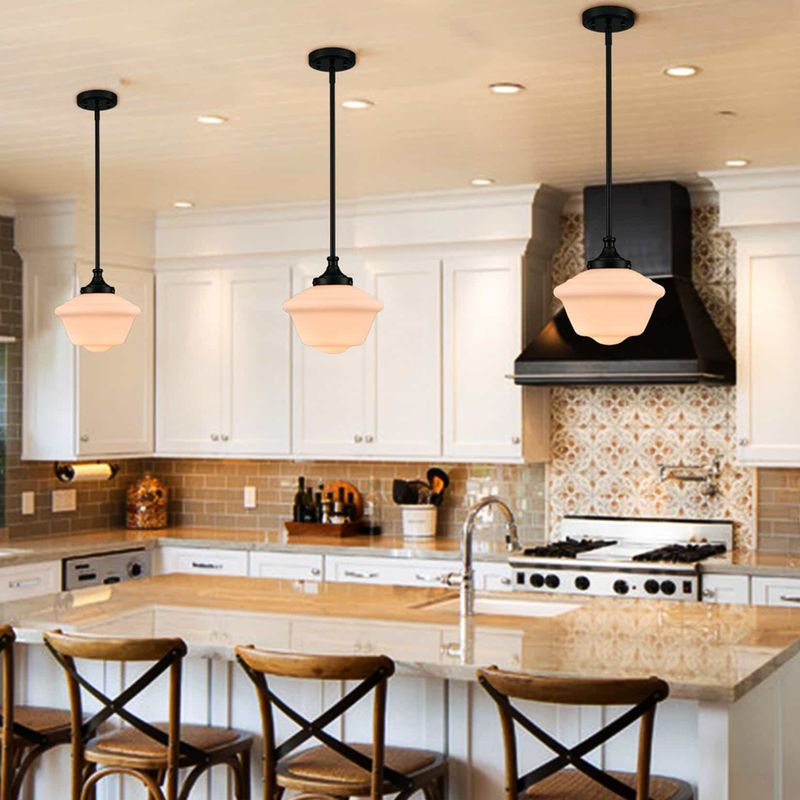
Swap out those boring builder-grade fixtures for something with authentic character! Schoolhouse pendants, industrial factory lights, and milk glass fixtures can transform your kitchen’s entire mood with the flip of a switch.
I found my kitchen’s pendant lights at an architectural salvage shop they once hung in a 1930s elementary school cafeteria. After rewiring for safety, they cast the most beautiful warm glow over our dining area, creating instant ambiance that no modern fixture could replicate.
Hunt for genuine vintage pieces at flea markets and antique shops, or choose from the growing number of reproduction options that offer vintage style with modern wiring. Either way, these statement pieces anchor your design and tell visitors your kitchen has stories to share.
5. Rounded Cabinetry
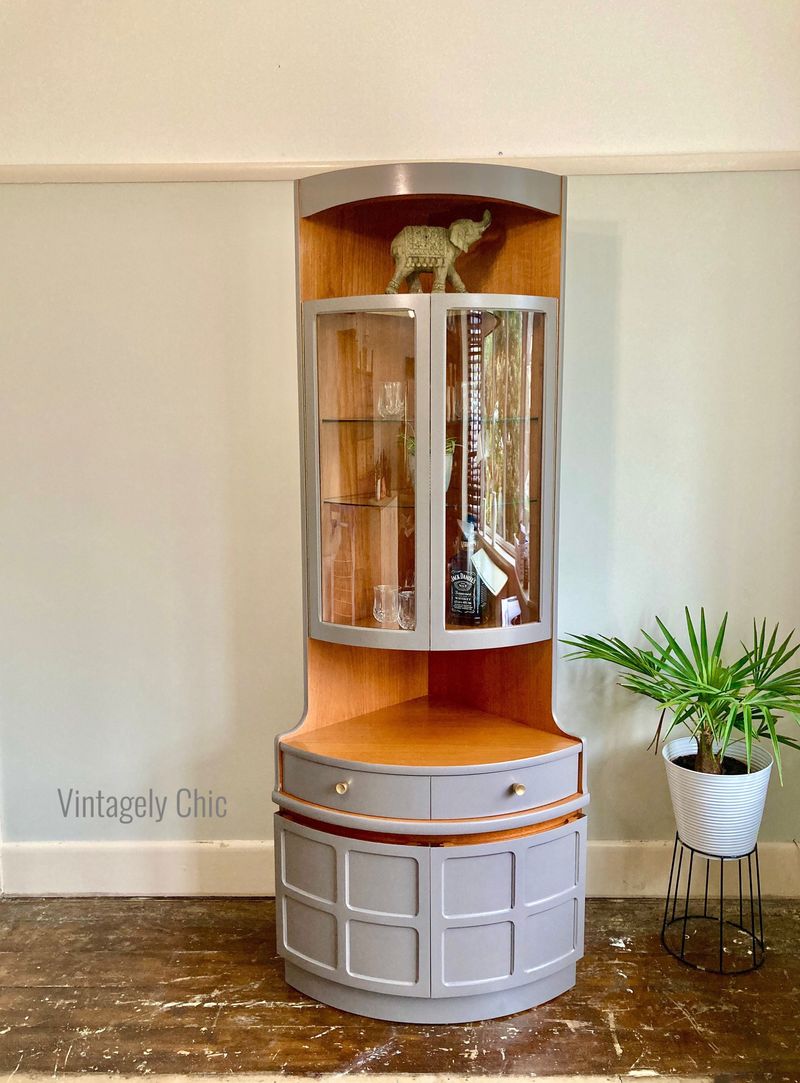
Remember those gently curved cabinets from mid-century kitchens? Those soft, rounded edges are making a major comeback as homeowners tire of sharp corners and rigid lines. Unlike today’s boxy cabinets, these curved beauties add flow and movement to kitchen spaces.
When designing my kitchen renovation, the carpenter suggested rounded corner cabinets as a nod to the home’s 1940s origins. Those curved elements now serve as my favorite design detail, softening the transition between walls and creating visual interest where straight edges would feel boring.
This style works particularly well in smaller kitchens where sharp corners can make navigation challenging. The rounded profile also creates natural display opportunities for your vintage kitchen collectibles or colorful everyday dishes.
6. Checkerboard Flooring
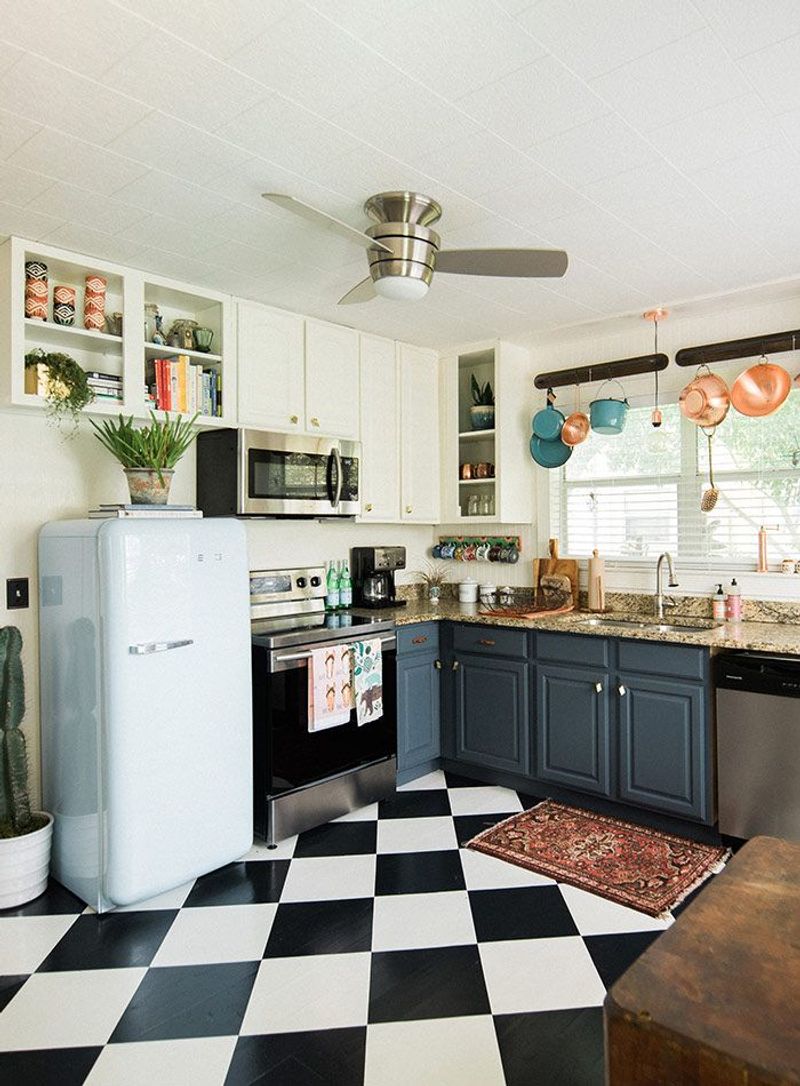
Few flooring patterns evoke vintage kitchens more instantly than the classic checkerboard. This iconic design dates back centuries but reached peak popularity in 1950s American homes, where black and white tiles created dramatic geometric impact.
Did you know checkerboard floors were originally popular because they hid dirt between cleanings? I installed mine three years ago, and they’re surprisingly practical showing less everyday mess than the solid-color floors they replaced.
Today’s options extend beyond traditional black and white. Consider softer combinations like cream and terracotta or navy and gray for a modern interpretation. Vinyl versions offer budget-friendly alternatives to ceramic tile, while maintaining that distinctive vintage pattern that instantly signals retro kitchen charm.
7. Colorful Cabinetry

Forget playing it safe with white or wood-tone cabinets! Vintage kitchens embraced color with enthusiasm from 1930s jadite green to 1950s bubblegum pink to 1970s harvest gold. These vibrant cabinet colors created spaces with personality and warmth that today’s all-white kitchens often lack.
When I painted my lower cabinets a rich teal blue, friends thought I was crazy. Now they’re planning colorful cabinet updates of their own! That’s the thing about vintage-inspired color it feels both fresh and familiar at the same time.
If you’re color-shy, start with just the island or a single cabinet run. The beauty of paint is its flexibility you can always repaint if your color courage grows. For authentic vintage vibes, look to historical paint collections from brands like Sherwin-Williams and Benjamin Moore.
8. Graphic Tile Backsplash

Long before minimalist subway tile dominated kitchen design, backsplashes featured bold patterns and vibrant colors that served as the room’s artistic focal point. Vintage kitchens from the 1920s through 1970s showcased distinctive tile work that reflected each era’s unique aesthetic.
How amazing that these statement tiles are experiencing such a strong revival! I recently installed a backsplash using reproduction Catalina-style tiles in blues and yellows, patterned after a 1928 California bungalow kitchen. Guests immediately gravitate toward it, running their fingers over the dimensional patterns.
Whether you choose authentic vintage tiles salvaged from old buildings or new tiles with vintage-inspired patterns, these graphic elements add instant character. Focus your pattern in one area like the stove backsplash to create a stunning focal point without overwhelming the space.
9. Mid‑Century Modern Accents
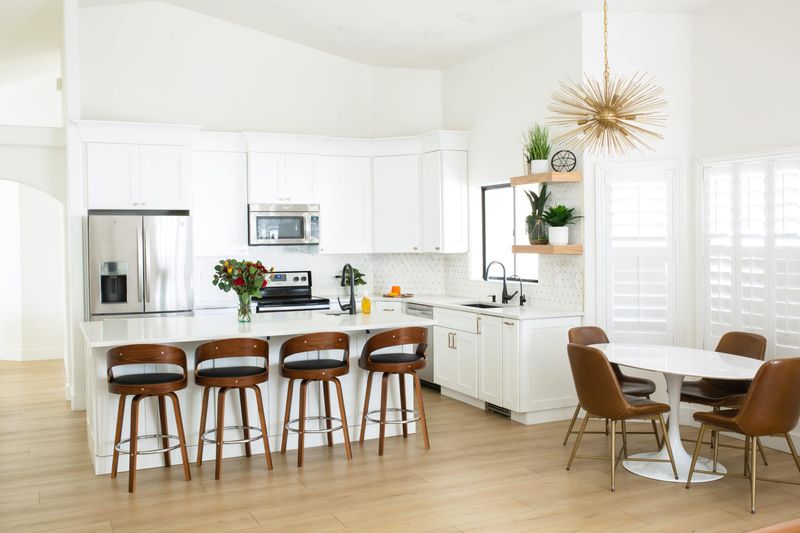
The clean lines and organic shapes of mid-century design bring timeless sophistication to today’s kitchens. This iconic style from the 1950s-60s balanced functionality with beauty in a way that still feels remarkably current.
Instead of gutting my entire kitchen, I incorporated mid-century elements through carefully chosen accessories. Walnut bar stools with hairpin legs, a starburst clock above the doorway, and atomic-patterned dish towels deliver vintage vibes without major construction.
Look for authentic pieces at estate sales and vintage shops, where surprisingly affordable treasures await. Focus on warm wood tones, organic shapes, and space-age motifs characteristic of this era. The beauty of mid-century accents is their ability to blend seamlessly with many design styles, making them perfect entry points for vintage-curious homeowners.
10. Open Shelving & Plate Racks

Before wall-to-wall upper cabinets became standard, kitchens displayed everyday dishes on open shelves and specialized plate racks. This practical storage solution kept frequently-used items within easy reach while adding visual interest to kitchen walls.
When renovating our small kitchen, I replaced two upper cabinets with simple white oak shelves. The space immediately felt larger and more inviting! My collection of blue and white dishes creates a cohesive display that changes slightly with each dishwasher cycle.
If you worry about dust, consider a plate rack instead these clever cabinets feature vertical dividers that hold plates upright while keeping them visible behind glass doors. Both options encourage thoughtful curation of your kitchen items and create opportunities to showcase vintage treasures that would otherwise stay hidden behind solid cabinet doors.
11. Furniture‑Style Island
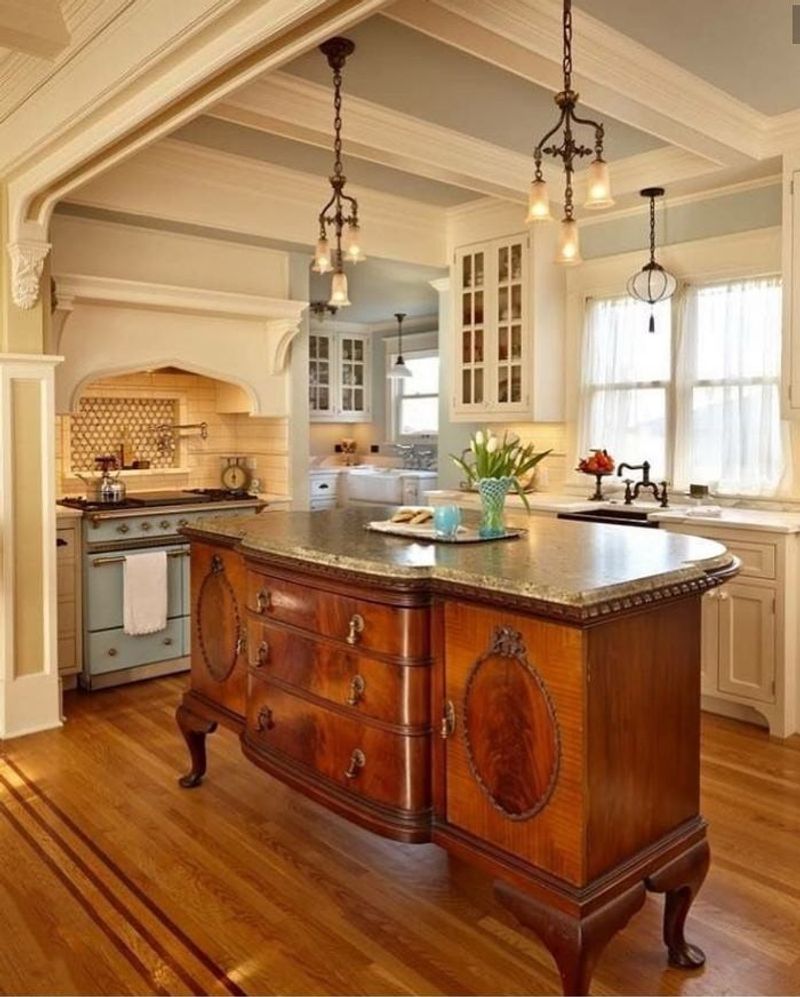
Before built-in islands became kitchen staples, homemakers repurposed furniture pieces as freestanding workstations. Antique tables, baker’s cabinets, and butcher blocks served as multifunctional prep spaces with inherent character that manufactured islands can’t match.
My own kitchen island began life as a library table from a 1920s schoolhouse. With its worn oak top and sturdy legs, it brings history and warmth to an otherwise new kitchen. The best part? I can move it when hosting large gatherings, creating flexibility modern built-ins don’t offer.
Hunt for potential islands at antique stores and flea markets look for sturdy construction and appropriate height (standard counter height is 36 inches). Consider adding casters for mobility, towel bars for convenience, or a lower shelf for storage. These personalized touches make furniture-style islands both functional and uniquely yours.
12. Vintage Brass Hardware
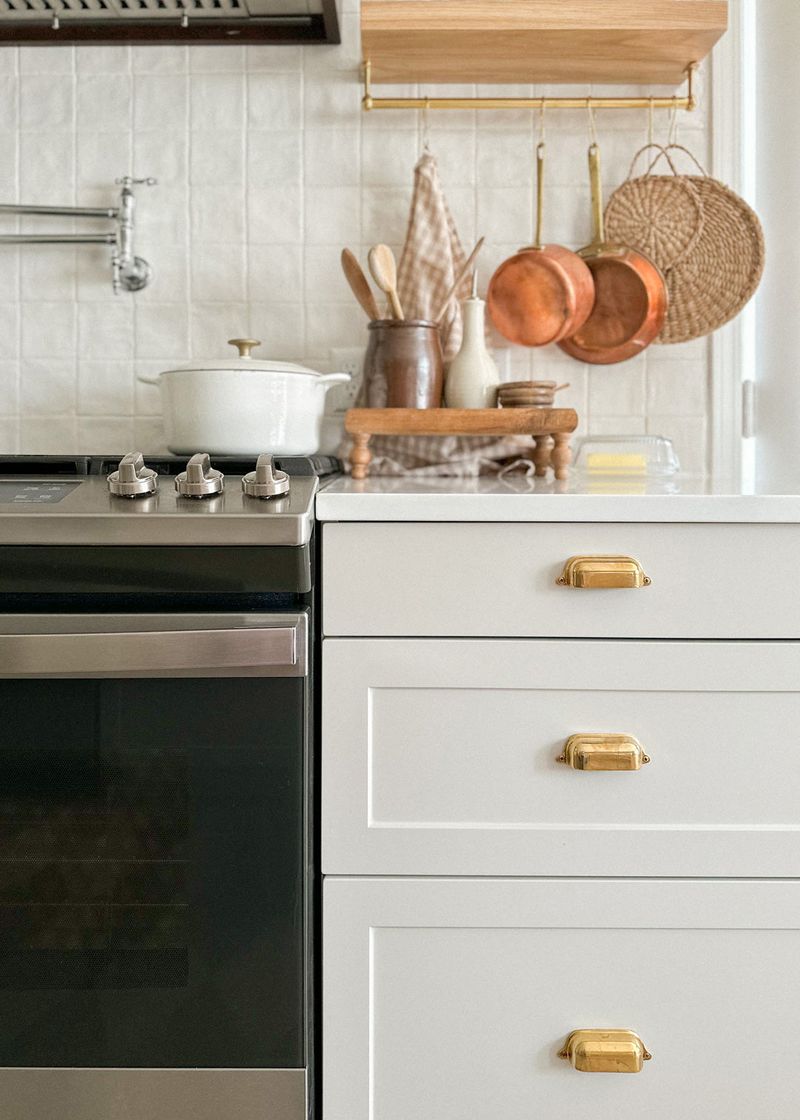
Those plastic-coated modern pulls have nothing on the substantial feel of authentic brass hardware. Vintage kitchens featured cabinet handles and knobs made from real metals that developed beautiful patinas over decades of daily use.
It’s amazing how something as small as hardware can transform ordinary cabinets! I replaced our builder-grade pulls with unlacquered brass bin pulls and knobs found at an architectural salvage yard. The warm metal tones instantly elevated our basic white cabinets, adding character that feels authentic to our 1940s home.
Unlacquered brass develops a living finish that darkens naturally where touched most often, creating a depth that manufactured “antique brass” finishes can’t replicate. For modern convenience with vintage charm, consider magnetic cabinet latches instead of the frustrating hook-style latches that originally secured vintage cabinet doors.
13. Soft Muted Green Shaker Cabinets

Long before stark white kitchens dominated design magazines, soft sage and muted mint greens created serene, nature-inspired cooking spaces. These gentle hues were especially popular in 1930s-40s kitchens, offering a calming backdrop for busy household hubs.
When selecting colors for my kitchen renovation, historical research led me to a muted sage green that appeared in many Depression-era homes. The color feels simultaneously fresh and timeless connecting my modern space to kitchens that weathered the challenges of previous generations.
Pair these subtle greens with simple Shaker-style cabinet doors for authentic vintage appeal. The clean lines of Shaker cabinetry have remained relevant for over 200 years, making them the perfect foundation for a kitchen that honors the past while functioning beautifully for today’s families.
14. Marble Countertops
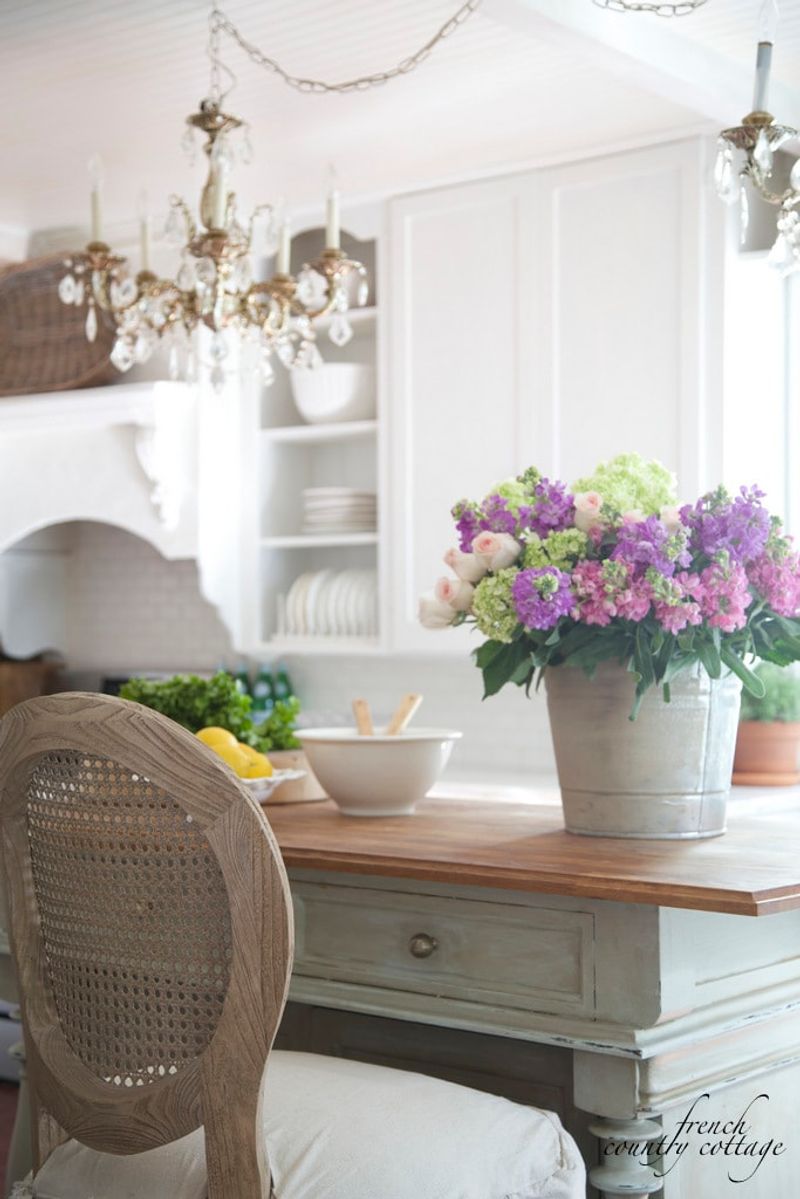
Before engineered surfaces dominated kitchen design, marble countertops were the luxury standard in upscale homes. Their cool surface was prized by bakers for rolling pastry, while the natural veining created one-of-a-kind patterns that couldn’t be replicated in manufactured materials.
Despite warnings about staining, I chose Carrara marble for my kitchen island and have zero regrets! Yes, it shows signs of use a faint coffee ring here, slight etching from lemon juice there but these marks tell the story of our family meals and gatherings.
Those concerned about maintenance might consider marble for a baking station rather than the entire kitchen. The patina that develops over time is actually part of marble’s authentic charm something our perfection-obsessed culture often forgets. A well-loved marble counter connects your kitchen to generations of home bakers who worked on these same timeless surfaces.
15. Reclaimed Wood Features
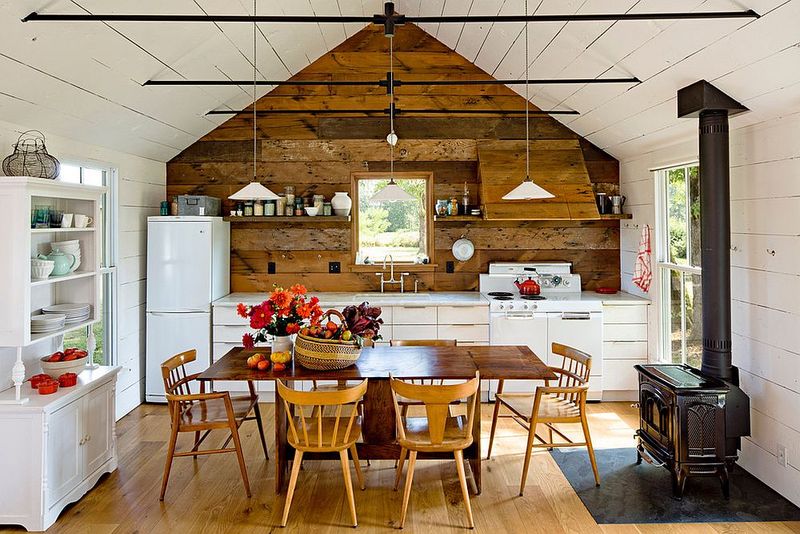
Before perfectly uniform building materials became the norm, kitchens showcased wood with character complete with knots, nail holes, and rich color variations that told stories of previous lives. These weathered woods brought warmth and history into the heart of the home.
My favorite kitchen element is our reclaimed barn wood pantry door, salvaged from a 19th-century Pennsylvania farm. Its weathered gray patina and original hardware transform a basic doorway into a conversation piece that connects our modern home to American agricultural history.
Reclaimed wood works beautifully for floating shelves, range hoods, ceiling beams, or accent walls. Beyond aesthetic appeal, choosing reclaimed materials keeps valuable old-growth timber out of landfills. Work with specialists who properly kiln-dry these materials to ensure they’re stable and pest-free before bringing them into your home.

